We enter Peru and discover a country of colors
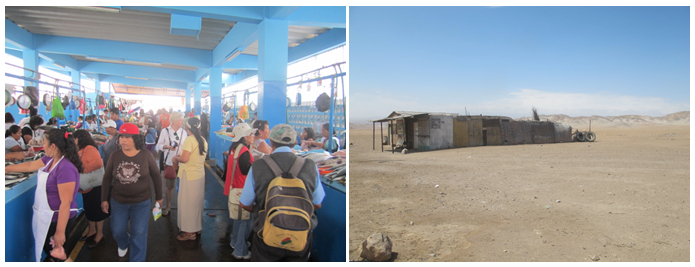
TWO KINDS OF OVERLOAD. We walk around a corner in Ilo, Peru, take a turn down an alley that looks to go to the pier and we're blitzed with the chaos on the left. Whoa! Color, smell, noise assaults from every direction. Two hours later in the Southern Peruvian Atacama and we're engulfed by this -- a desert so barren and vast that this is one of the few structures we come across. Yet, it too overwhelms the senses. We've been in the Atacama for 17 days and have come to love its many, many faces. Mile after mile it changes in subtle and dramatic ways. Yet my reaction is the same: it's huge, void of most life, and strangely enticing.
From the sea to the deserts to the mountains, we bike on!
Let’s not kid a kidder. I’m not a professional writer, nor a professional travel writer, and I’m really struggling with how to tell the story of our first two days in Peru. There’s so much to tell that its overwhelming. Where to start? End? It’s frustrating because I know that no matter how good it is, it won’t convey 10% of the experience and feeling that KR and I have gone through. I can’t make sense of it and boil it down to the most crisp description as possible. This is not a well-tended short story. Here’s what I want to say in no particular order or priority:
- Seventeen days in the desert and we now think of it as colorful and as full of intrigue as a Picasso painting. The Atacama is anything but bland, even though its always there. It’s so, so, so _________ big that you wonder how anyone ever got through it without motorized transportation. I wonder if anyone would find us before we turned to shriveled prunes if we have trouble . And just then, we see an old man who looks like he’s 90, walking up the road high in the mountains in the middle of nowhere. What’s he doing? How can he do that? We’ll never know.
- A lot of things have happened to us in the last couple of days. We’ve crossed our first border with no help from friends. We’ve had two wonderful days in the saddle of NV and I’m finally getting in the groove. We’ve seen a fishing village so full of color, chaos and activity that we just wanted to sit and watch for a day. We’ve been so far out, up and away in the altiplano that we knew we were finally getting “out there!” We pull into Peru’s finest colonial city, Arequipa, last night to be engulfed in the Peruvian way of driving — a slightly calmer version of Nepal’s everyman for themselves (also known as The Small Die Young). And right in the middle of said city’s traffic, KR and I have our first double-occupancy tip over. We fall off and the two of us and three Peruvian passersby right Now Voyager and we go on our way. Two hours later we’re sipping wine from clay glasses in a restaurant that specializes in Pre-Incan cuisine. Huh? Oh, and we’re staying in a converted colonial home made from blocks of volcanic ash 3 feet thick and 3 times the size of any room so far .
- We’re just getting to know Peru. Everyone from Chile and Argentina tells us that Peru is a lot poorer, and it is. Not a whole lot of fast, small cars on the highway. There’s a lack of polish and infrastructure that Chile has. It’s important to remember that Peruvians and Chileans have a history not getting along too well. About a 100 years ago they fought at least one war over what is now Chile’s northern Atacama desert, the same spat of desert that produces 40% of Chile’s GNP today. It seems that mother nature (and Chile’s superior navy) dealt Peru’s Atacama a severe blow — no minerals to mine.
- We can’t wait for the Next 50. We’ve been on the road for 50 days and we’re now just starting to get in our groove. Really. Packing and unpacking? No problem. Finding a hotel? A bit more of a problem, but no worry. What to wear? No choice. Pre-flight routine is like riding a bicycle: slide onto the saddle, wait for KR to get on, hook up the intercom, set the GPS, check the gas, look at the heat gauge, put it in gear, rock & roll. Even though more muscles than I knew I had ache, this is getting easier.
The situation as of February 12 2011 in Arequipa, Peru. We got to this colonial city 7500 feet into the alto plano last night. We’re staying here for a couple of days while we attend to things past, a bit of work, and see all the alleys and shops we can get in,( and, if FW ever gets off the computer some historic sites and maybe a museum or four (kr note). Next leg will be back west to the coast and then head north to the town of Nazca, Peru.
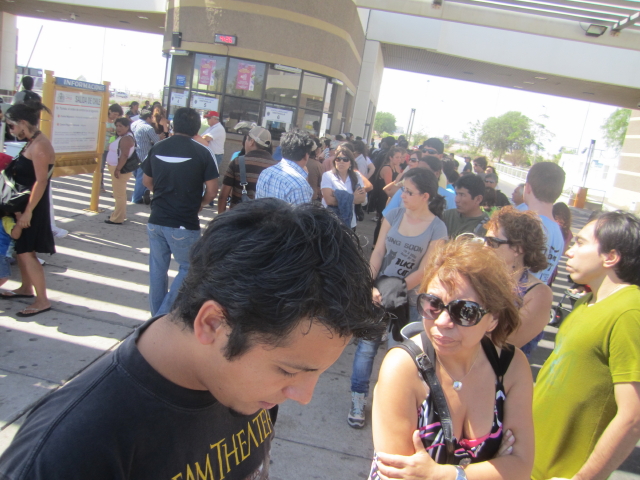
First unchaperoned border crossing. There are always two parts to crossing a border in SA. Exit from existing country (immigration and vehicle). Entrance into new country (Immigration and vehicle). This is a shot of the Chilean exit. The crossing took us 1 hr. 45 mins
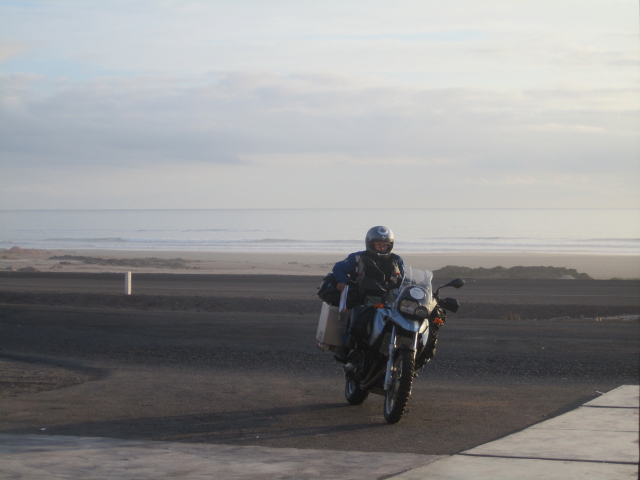
We thought we had it made but were pulled over on the Peruvian coast by a Guard station. KR sits on NV while I waste 15 minutes while some guy gives us yet another stamp. Notice its getting dark and we still have 100 miles to go.
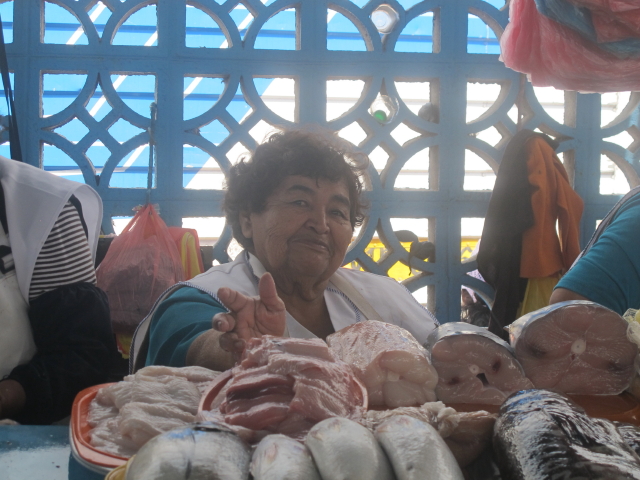
Come on, try some of my....? Fish was obviously fresh because right behind this lady's back was this...
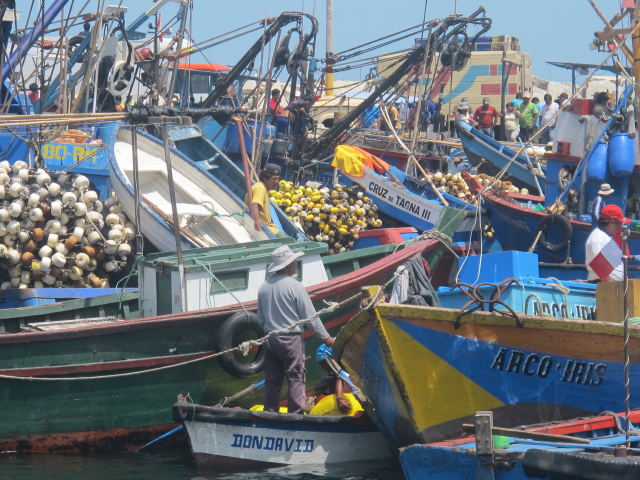
I couldn't figure out what was totally going on as there was just too much of it happening in too tight a space.
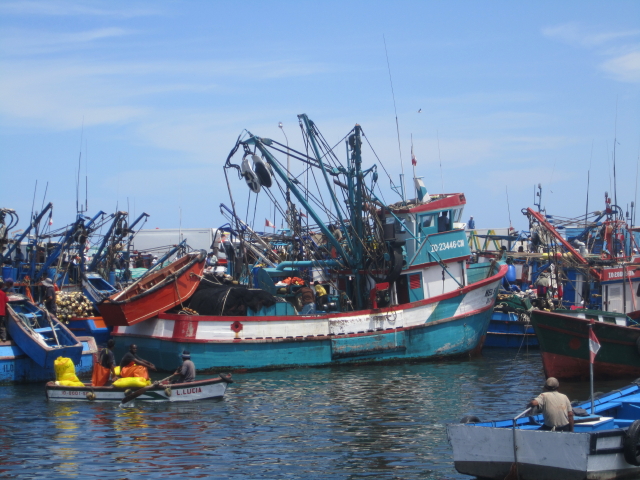
But basically the Big Dogs steamed right in and muscled their way to the dock. All others had to unload/load via these guys...
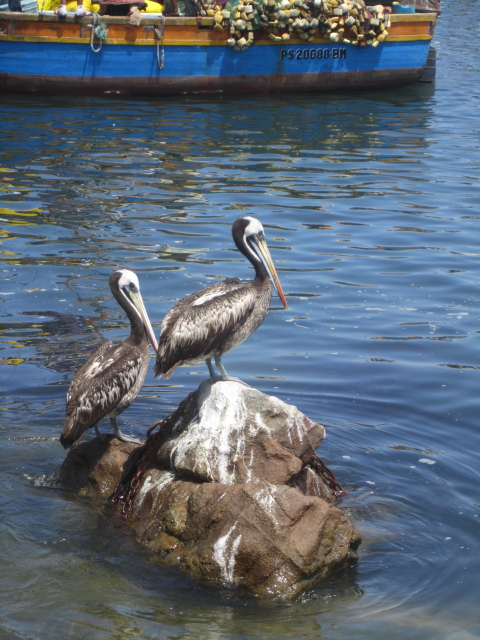
Everyone eats well in this harbor. Man-sized pelicans took part as well as lots of seals. Scraps thrown overboard makes for a happy ecosystem
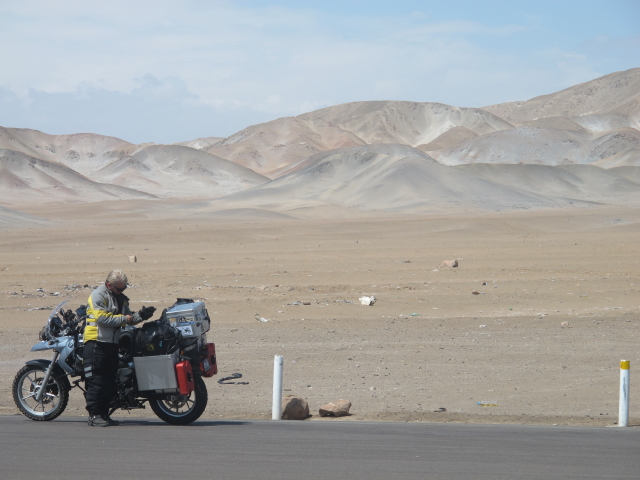
Two hours in and there's nothing around. Since there's no place to stop and buy something, we pull over and chug our own water.

This is a trick picture to see who's reading and paying attention. What's wrong with this picture? Our Judging Committee is thinking up the prize for the right answer.
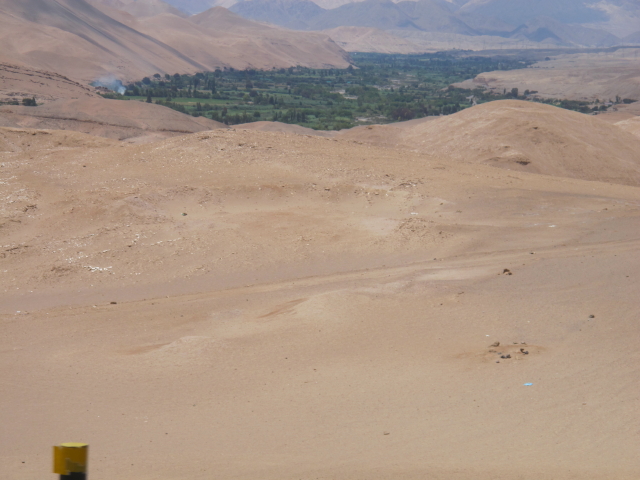
Just when you think nothing would ever grow, we descend into a valley like this. Major run off from melting snow creates rivers which create this.
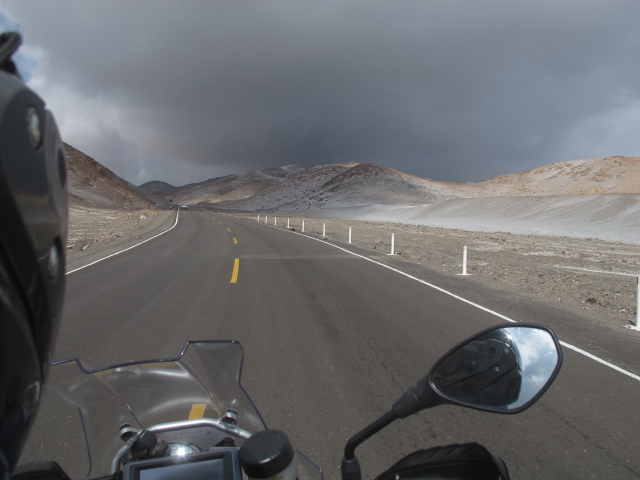
At about 8000 feet it looked like we were going to get hit by rain, hail, snow or all three. We didn't.
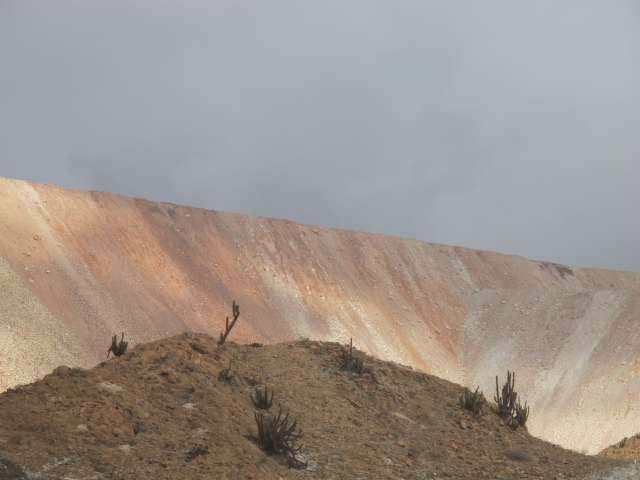
As we descend toward Arequipa, we come across this patch of color in what looks like a man-made damn, but it could be natural.
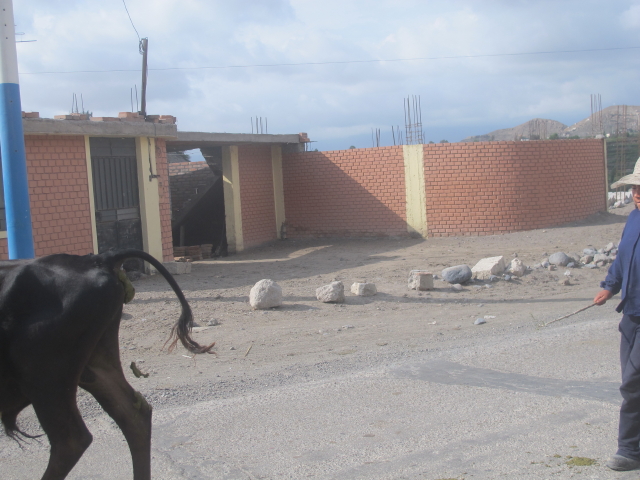
We encounter all kinds of traffic as we arrive in Arequipa. We have no shots of the real dangerous beasts of Arequipa traffic-- Fiat 500-sized taxis -- as KR's eyes were either closed or glued to our city map. Suffice it to say that it took all our courage, skill and luck to only have one flop-over in finding our hotel. We finally found it and an hour and a half later we had everything put away nicely.
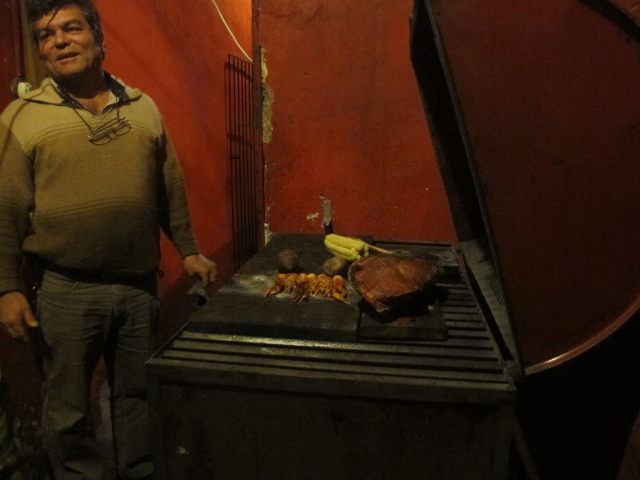
The proprietor of our restaurant, either Jose or Walter depending on your nationality, showed us his "Pre-Incan" kitchen-grilling on volcanic stones, stewing in clay pots and no oil, butter, onions. The meat in front of the river shrimp is llama.

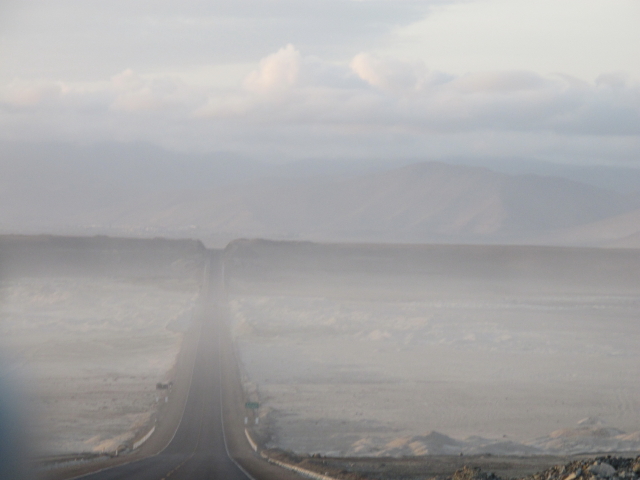
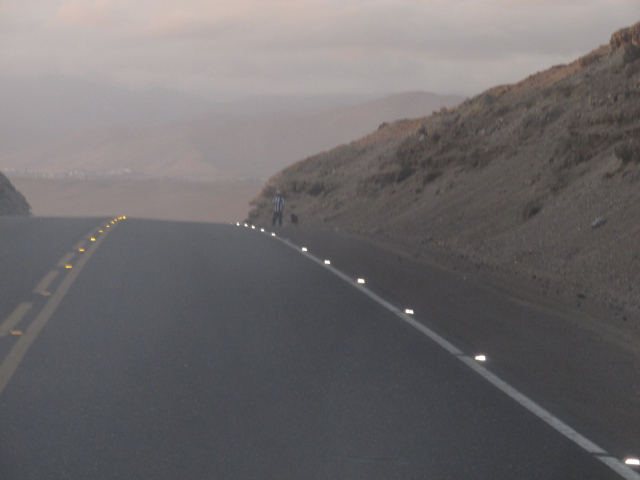
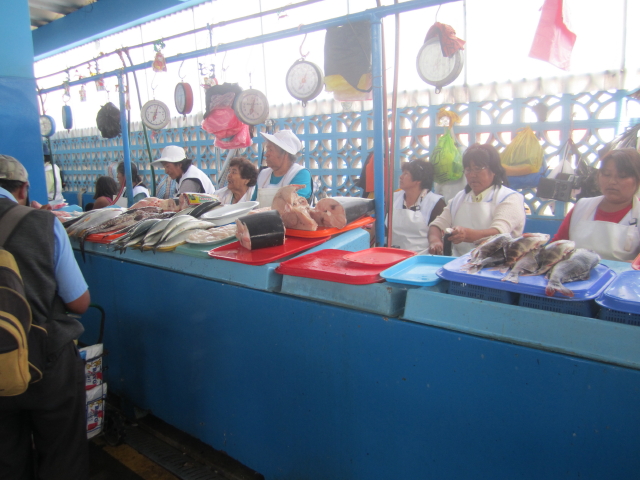
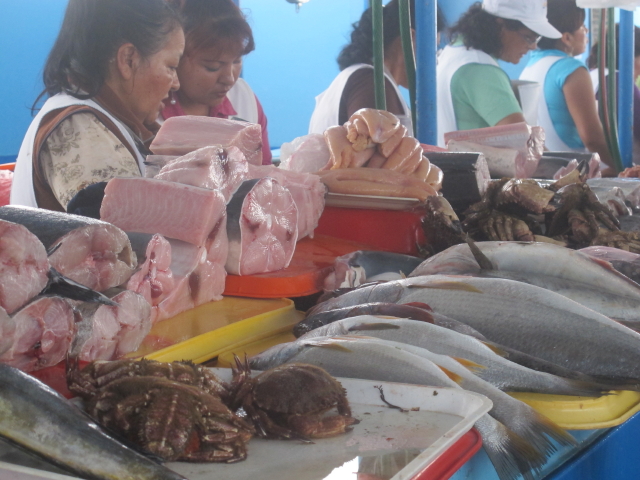

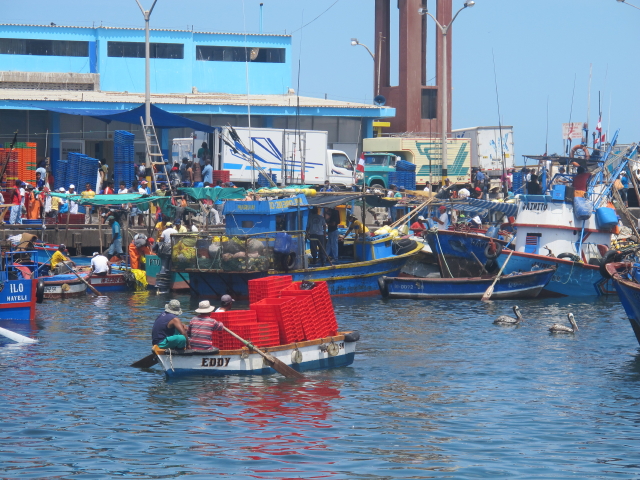
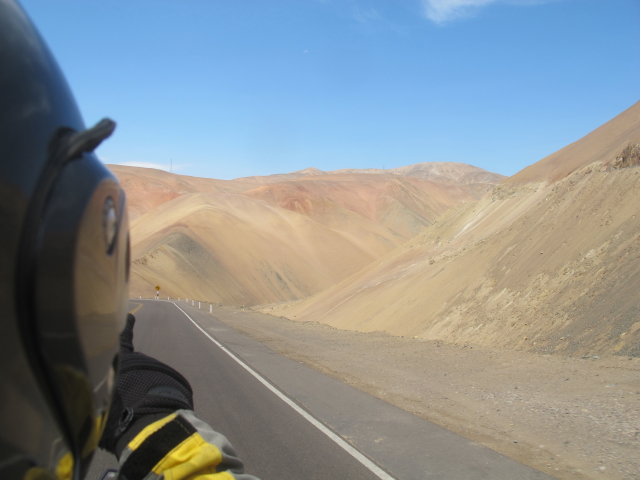
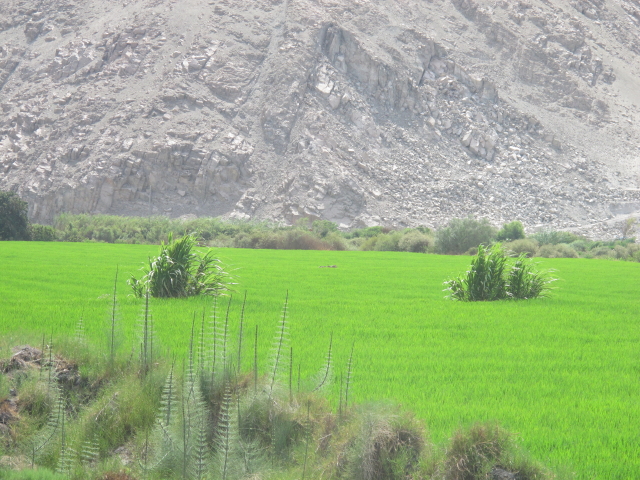
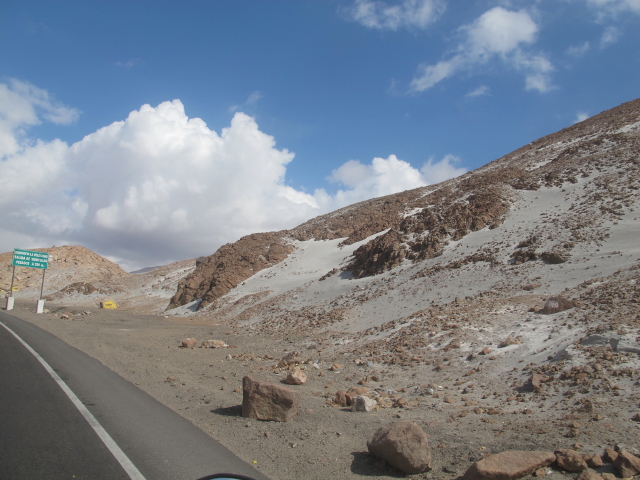
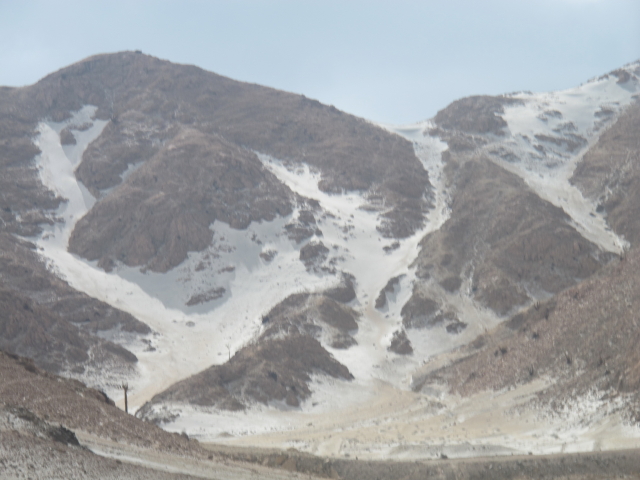
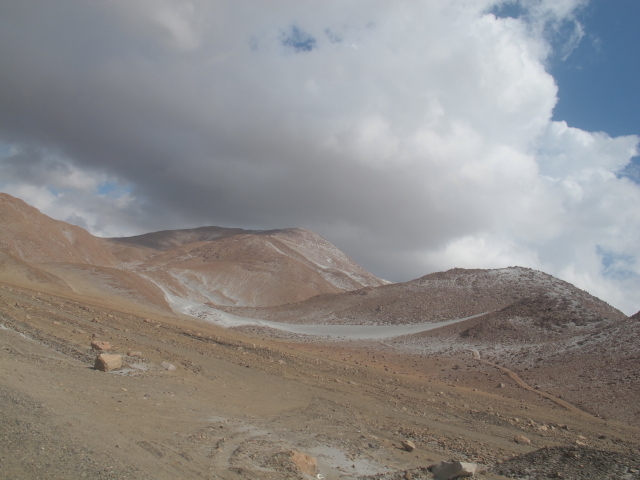
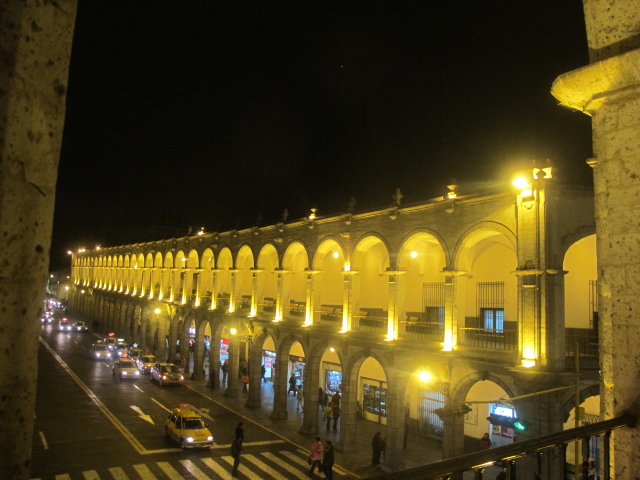
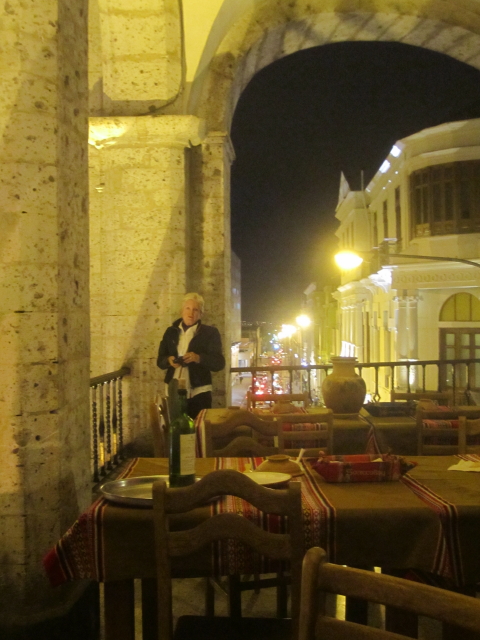
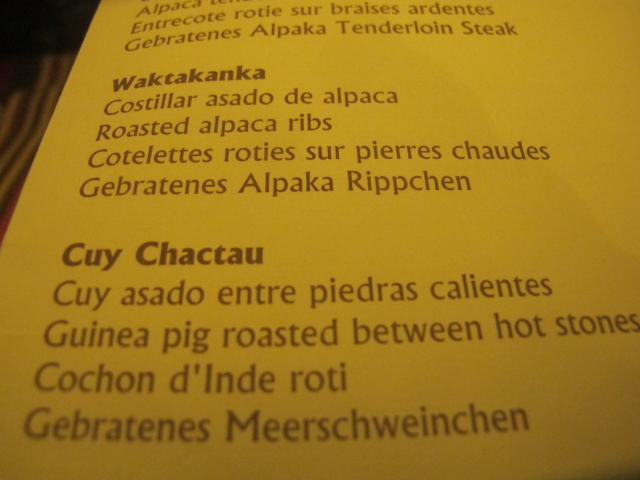
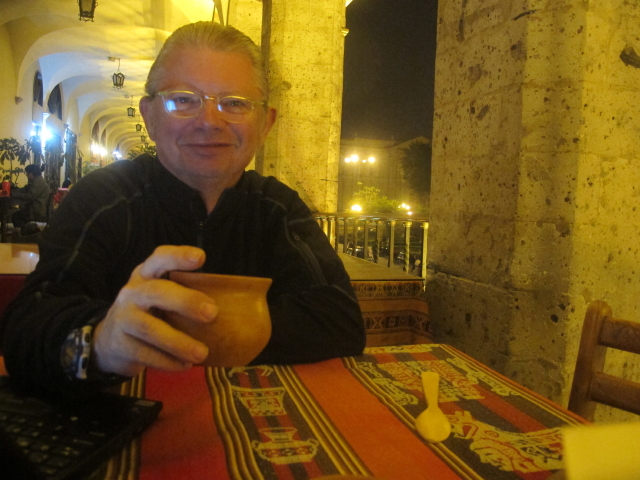
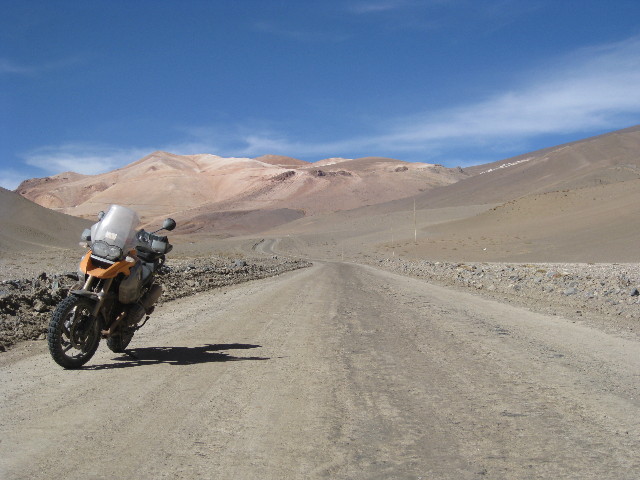
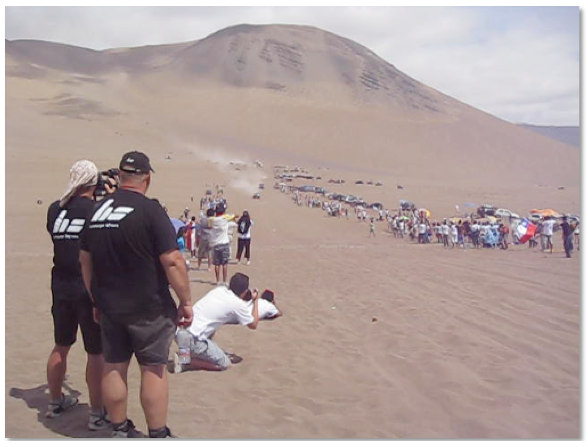
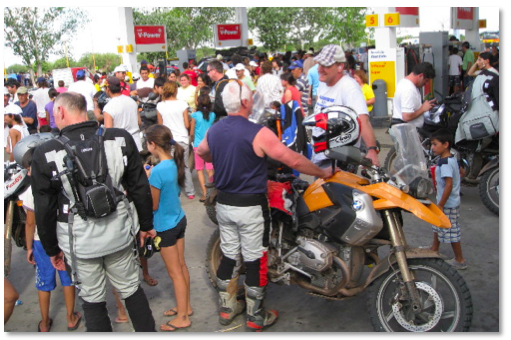
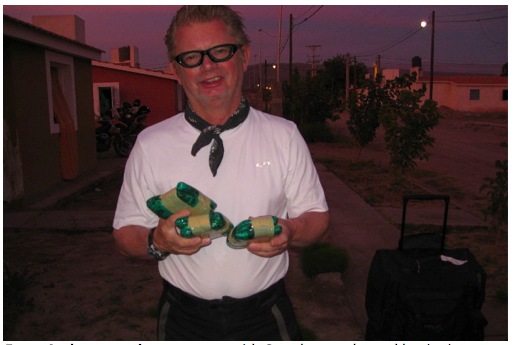
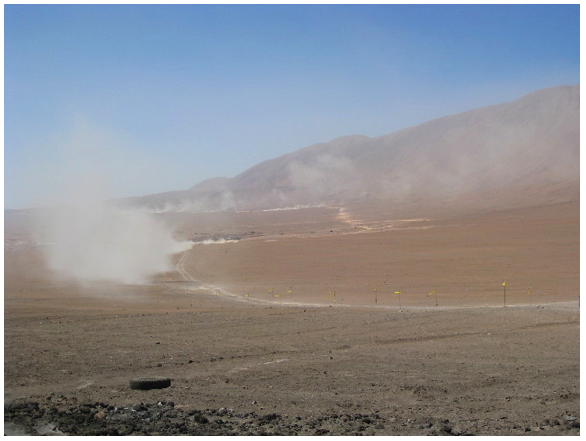
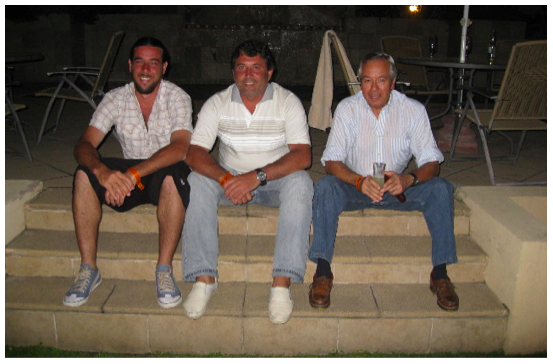
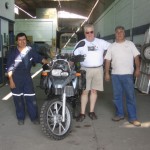
Another fine report and photos. I could read many more pages.
Looks like ploughed fields to me. Maybe something connected to mining.
Bravo Jorge – glad to see you have your groove on!
Sounds like an absolutely fabulous trip and adventure, especially since the problems with the bike seem to be fixed. Keep the reports coming.
Hi Fred… just a note to prove I am reading your blog… (grin)… love the roasted guinea pig… I think I would have followed KR’s culinary decisions… keep up the blogging.. I am living vicariously through your trip… cheers, Jim
Good guess, Chuck. The trick is that picture of the Atacama was taken in Chile, not Peru. We never did figure out what the aligned rocks were all about. They stretched for tens of miles and seemed to be defining lots, although nothing was there or on its way. 🙂 fw
Was the guacamole called “ají?” The spicy stuff? If so, please send me some! Good to see you two finally relaxing a bit.
That picture… it looks like someone has graded the site. That it is apparently in the middle of no where could be your trick.
Two things about that picture. (1) It’s Chile, not Peru, and (2) You’re right, what look to be lots have been laid out very precisely with stones. Not sure they’ve been graded. Of course, this is crazy as there’s nothing out there and no access to water. fw
I wonder if those crazy stones, lined up for miles in Chile, look more interesting from above…. like from an airplane? Or higher?
Ok so Karen passed on the guinea pig and llama, but you didn’t, right? Man’ed right and had an order? Si o no?
The cook refused to cook it “medium rare, ” so I passed on an overcooked little critter. As a result of seeing the little guys on the menu, KR always seems to be in the mood for Italian…